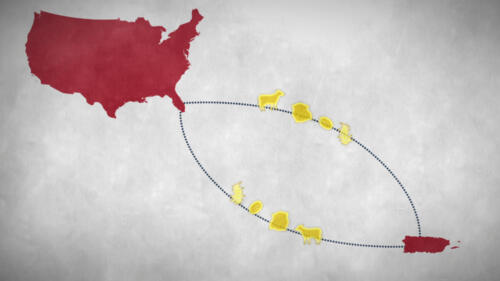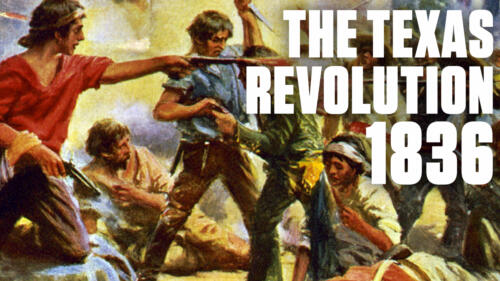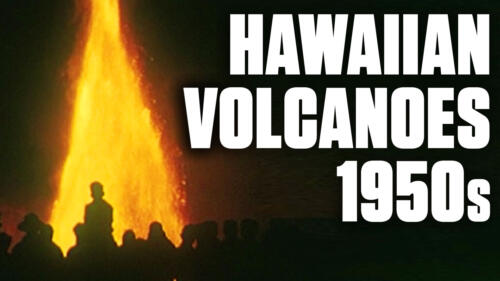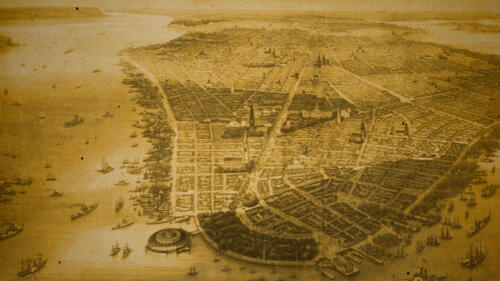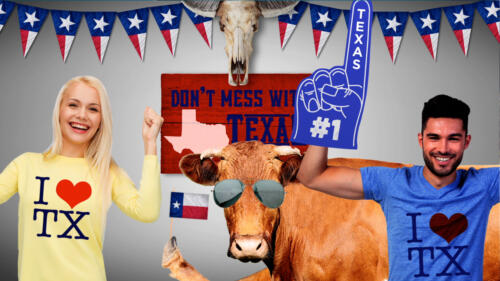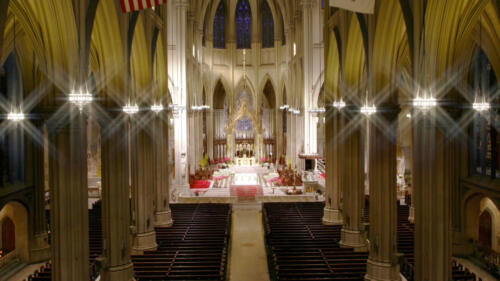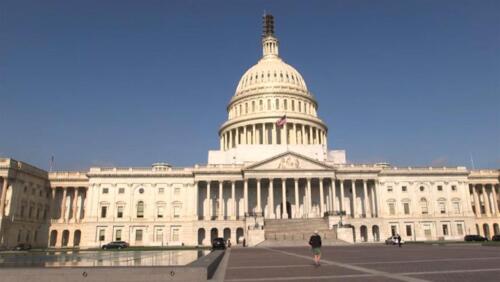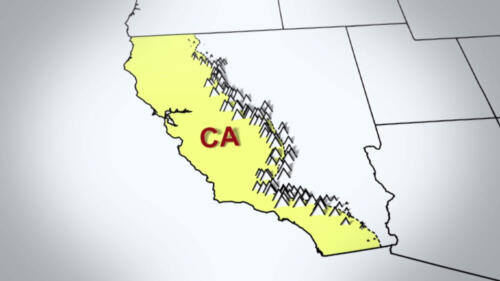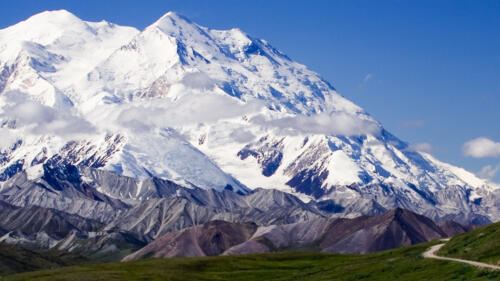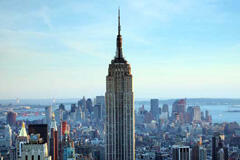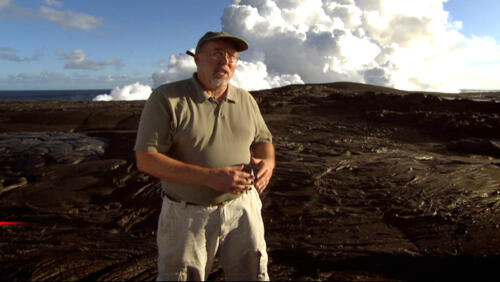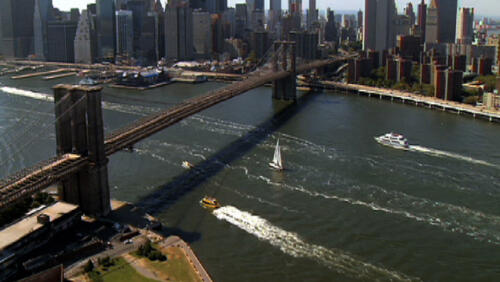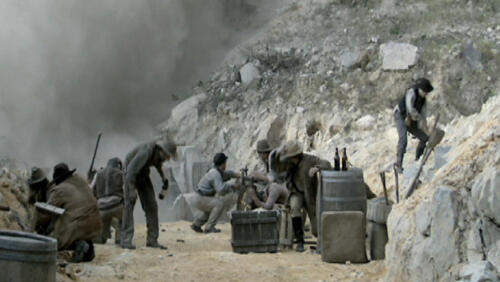U.S. States
Stretching more than 3,000 miles from the Atlantic Ocean to the Pacific Ocean, the United States of America is made up of 50 states, each with its own capital, traditions and history.
Featured Overview
Learn about Puerto Rico's complex history, starting with its Spanish rule to becoming a U.S. territory. See how its eventual commonwealth status, the 2006 recession, and 2017's Hurricane Maria have caused political and economic upheaval.
3:18m watch

Jeremy Woodhouse/Getty Images
Featured Overview
Learn about Puerto Rico's complex history, starting with its Spanish rule to becoming a U.S. territory. See how its eventual commonwealth status, the 2006 recession, and 2017's Hurricane Maria have caused political and economic upheaval.
3:18m watch
Start Here

Hawaii became part of the union more than six decades after an illegal coup ousted the Native Hawaiian monarchy.

Find out how Kentucky became the center of the world’s production of the distinctive corn-based, barrel-aged whiskey.

Explore nine things you may not know about the Lone Star State.

Though mocked by some at the time, the 1867 purchase of Alaska came to be regarded as a masterful deal.
A Tour of 1940s New York City
Flashback: A Tour of 1940s New York City
Experience the sights and sounds of New York City as if you were visiting in the 1940s. A lot has changed since then, but not everything.
2:21 watch

3 Surprising State Facts
Explore All Related Topics
Without the investment in the interstate highway system, America would not be where it is today.
10:10m watch

Spanish settlers, independent Mexicans and southern frontiersmen jostled for control of Texas until the territory became the 28th U.S. state in 1845.

Wyoming became the 44th state to join the union in 1890. The first U.S. territory to allow women to vote, Wyoming has the smallest population of all the states.

West Virginia separated from Confederate Virginia to earn statehood in 1863. The state today is known for its coal production and its mountainous terrain.

Tennessee, the 16th U.S. state, is home to the historic music centers of Memphis and Nashville and the Great Smoky Mountains National Park.

Colorado attracted the ancient Pueblo peoples and the Plains Native Americans with its natural resoruces before becoming the 38th state of the union in 1876.

Nebraska, known as the “Cornhusker State,” is famous for its vast great plains, pioneer history, agricultural production and college football.

Arkansas boasts a rich history, from its early Native American inhabitants and European exploration to the Civil War and the civil rights movement.

Delaware, one of the smallest but most densely populated states, was the first of the original 13 colonies to ratify the U.S. Constitution in 1787.

Connecticut, often called the "Constitution State," joined the Union on January 9, 1788, as the fifth state.

Ohio, a U.S. state since 1803, has sent seven presidents to the White House and is home to the rock and roll and National Football League halls of fame.

Pennsylvania's largest city is known as the home of the Liberty Bell, Independence Hall and the "Rocky" statue.

Boston has played a central role in U.S. history, from its settlement by the Puritans, to its American Revolutionary battles to its storied universities.

America's second largest city was originally inhabited by indigenous tribes and expanded with settlers from Spain, Mexico and then gold prospectors, land speculators, laborers, oil barons and those seeking fame in Hollywood.

Initially built by the Dutch to stave off the English, Wall Street evolved to represent much more than a Manhattan address.
Learn how slavery influenced the fight for Texas independence. See how the Mexican government tried to stop American immigration and the practice of slavery, leading to the Texas revolution and the battle of the Alamo.
4:03m watch
Volcanoes in Hawaii have been erupting on and off for thousands of years, and the 1950s were no exception. As you'll see, volcanic action in Hawaii was just as terrifyingly awesome in the Atomic Age as it is today.
2:35m watch
Experience the sights and sounds of New York City as if you were visiting in the 1940s. A lot has changed since then, but not everything.
2:21m watch

New Jersey’s Action Park quickly earned the infamous nickname “Accident Park.”
Washington, home to the Space Needle, Windows 95, and expensive coffee, has a long and storied history.
1:39m watch
President Donald Trump has indicated he will spend time in New York City. The last time a sitting president called NYC home, things were very different.
2:02m watch

A little more than a decade after Indiana joined the Union on December 11, 1816, newspapers began to refer to the residents of the newly admitted state as “Hoosiers.” (Alternate spellings included “Hooshers” and “Hooshores.”) The unusual nickname appeared in print as early as 1832 and gained popular usage the following year after publication of […]
It's densely populated and filled with the world's most iconic landmarks. Learn some facts and figures behind "the city that never sleeps."
1:37m watch

Explore nine surprising facts about California, which achieved statehood 165 years ago this week.

Find out how Kentucky became the center of the world’s production of the distinctive corn-based, barrel-aged whiskey.
Texas is famous around the world for oil, cattle and state pride, but there’s a lot more we bet you didn’t know about the Lone Star state.
2:57m watch

More than a century ago, Punxsutawney residents relied on groundhogs for more than just weather forecasts. They ate them as well.

New York state is America’s top apple grower, after the state of Washington, but New York City’s nickname has nothing to do with fruit production. In fact, the Big Apple moniker first gained popularity in connection with horseracing. Around 1920, New York City newspaper reporter John Fitz Gerald, whose beat was the track, heard African-American […]

Learn eight surprising facts about America’s 35th state.

Explore nine things you may not know about the Lone Star State.
Grand Central Terminal is one of America's busiest train stations, with over 700,000 people passing through it every day. Find out more about this iconic landmark.
2:56m watch

Sugar barons and businessmen ousted Hawaii’s longstanding monarchy, setting the stage for US annexation.
Get the facts on the history of this iconic New York City landmark.
2:15m watch
George Washington picked out the location and laid out a perfect diamond shape for the city, spanning parts of Maryland and Virginia. But a looming fight over slavery caused the Virginia side to leave the District and return to its home state, giving D.C. its strange shape.
2:30m watch
With the discovery of gold in 1848, thousands of prospectors poured into California. When it came time to create a state, the new residents wanted to make sure California included all potential gold fields in the Sierra Nevada range, and so drew their own borders.
1:53m watch

From Franklin to Absaroka, a number of upstart territories just missed out on statehood at various points in U.S. history.
The world-famous Empire State Building is a symbol of New York City and one of the world's most popular tourist attractions.
1:59m watch
Alaska celebrates the long awaited grant of statehood with an enthusiastic celebration. It becomes America's forty-ninth state and, by far, the largest.
1:03m watch
The geological history of Yellowstone National Park dates back to the formation of the North American continent.
3:23m watch
When it was completed in 1931, New York's Empire State building was the world's tallest skyscraper. What was the driving force behind the design of this massive structure?
3:12m watch
The Alcan Highway connected the Alaskan wilderness to the lower 48 states for the first time.
3:40m watch
the origins of the Hawaiian islands have remained a geological puzzle for generations, but recent investigations uncovered that volcanoes hold the key to much of the formation of these beautiful islands.
2:59m watch
Linking the borough of Brooklyn with Manhattan, the Brooklyn Bridge stands as a marvel of engineering.
3:08m watch
Opened in 1825, the Erie Canal was one of the most extraordinary engineering feats of the 19th century, connecting eastern ports and manufacturing with the rest of the country.
2:39m watch

Interesting Facts On July 16, 1790, a compromise between Thomas Jefferson, Alexander Hamilton and James Madison—known as the Residence Act—was passed, declaring George Washington’s selection of a site on the Potomac River as the nation’s new permanent c...

The Federal-Aid Highway Act of 1956 was signed into law by President Dwight Eisenhower on June 29, 1956. The bill created a 41,000-mile system of interstate highways that Eisenhower promised would eliminate unsafe roads, inefficient routes and traffic jams.

New Orleans, situated on a bend of the Mississippi River 100 miles from its mouth, has been Louisiana’s most important city and the Gulf of Mexico’s busiest northern port since the early 1700s.

Chicago: Prehistory and Early Years The name Chicago may have come from a Miami Indian word for the wild leeks that grew on the bank of the short Chicago River. Over the centuries the Miami, Sauk, Fox and Potawatomi tribes all lived in the area. The 167...

New York City in the 18th Century In 1664, the British seized New Amsterdam from the Dutch and gave it a new name: New York City. For the next century, the population of New York City grew larger and more diverse: It included immigrants from the Netherl...

Interesting Facts On January 26, 1700, a large earthquake 60 to 70 miles off the coast of the Pacific Northwest caused a tsunami roughly 33 feet high to engulf the Washington coastline. Ten hours later, the tsunami hit the main island of Japan with 6-to...

San Francisco: Prehistory and Founding The first inhabitants of the San Francisco area arrived around 3000 B.C. By the 16th century, when the first Europeans sailed along the California coast (always missing the Golden Gate due to fog), the area was inh...

An archipelago, Hawaii is the 50th U.S. state and the only state outside North America.

Florida joined the Union as the 27th state in 1845 and is nicknamed the Sunshine State for its balmy climate and natural beauty.

Las Vegas was founded by ranchers and railroad workers but its greatest asset became its casinos. Las Vegas’s embrace of Old West-style freedoms—gambling and prostitution—provided a perfect home for East Coast organized crime.

Interesting Facts Originally conceived of in 1928 by Dr. Henry Moore of Ontario, Canada, the International Peace Garden was intended to establish a memorial to perpetual peace between Canada and the United States. Encompassing 2,339 acres within North D...

Interesting Facts English colonists led by George Popham established Fort St. George in Maine in 1607, the same year Jamestown, Virginia, was founded. Overwhelmed by the harsh climate and left leaderless after Popham’s death, the colonists returned to E...

Louisiana became a U.S. territory as part of the Louisiana Purchase in 1803 and was admitted to the Union in 1812. The birthplace of jazz, the state is known for its Mardi Gras festival.

Virginia was the first of the original 13 colonies to be permanently settled by the English, who established Jamestown on the banks of the James River in 1607. Virginia became a state on May 15, 1776.

Interesting Facts On October 5, 1798, congressman Matthew Lyon was indicted under the Sedition Act for criticizing President John Adams in a letter he had written to Spooner’s Vermont Journal. Fined $1,000 and sentenced to four months in jail, Lyon was ...

Utah became the 45th member of the Union on Jan. 4, 1896. The state is known as a premiere skiing destination, with mountains near its capital Salt Lake City receiving an average of 500 inches of snow annually.

South Dakota joined the United States in 1803 as part of the Louisiana Purchase. The state is home to Mount Rushmore.

South Carolina was settled by the English in 1670 and became the eighth state to ratify the U.S. Constitution in 1788.

Rhode Island was one of the 13 original colonies, first settled by Roger Williams in 1636. In 1776, Rhode Island was the first of the colonies to renounce its allegiance to the British Crown. Today it is the smallest U.S. state by landmass.

Pennsylvania was founded by William Penn as a haven for his fellow Quakers, and became known as the birthplace of independence as one of the 13 colonies.

Oregon joined the Union in 1859. The state is one of the nation's top producers of wine, hazelnuts and Christmas trees.

The Indian and Oklahoma territories combined to form Oklahoma on November 16, 1907. It is the 46th state admitted to the Union.

One of the original 13 colonies, North Carolina was the first state to instruct its delegates to vote for independence from the British crown during the Continental Congress. Following the Revolutionary War, North Carolina developed an extensive slave plantation system and became a major exporter of cotton and tobacco.

New Jersey’s Native American History Before Giovanni de Verrazano became the first European settler to explore New Jersey in 1524, the Delaware Indians had lived in the region for more than 10,000 years. The Delaware Indians, also known as the Lenni-Len...

New Hampshire was the first state to have its own constitution and the 9th to ratify the U.S. Constitution—officially putting the document into effect.

Interesting Facts Carved by glaciers more than 10,000 years ago, Flathead Lake is the largest freshwater lake between the Mississippi River and the Pacific Ocean. It is 28 miles long, between 5 and 15 miles wide and encompasses nearly 200 square miles. ...

Interesting Facts When the Missouri Territory first applied for statehood, a debate ensued over the government’s right to restrict slavery. The Missouri Compromise granted Maine entrance into the Union as a free state while allowing Missouri permission ...

Interesting Facts Oliver Pollock, an Irish merchant in Spanish-controlled New Orleans who used his fortune to help finance the American Revolution, is credited with creating the dollar sign in 1778. He is buried in Pinckneyville, where he lived with his...

Minnesota is the 32nd state to join the Union and is the most northerly of the 48 conterminous U.S. states. It's home to the Mall of America and the largest continuous network of indoor pedestrian pathways in the United States.

Michigan became a state in 1837. Its largest city, Detroit, is home to the American auto industry and is the birthplace of Motown Records.

Massachusetts’ Early Colonial History The first settlers in the state now known as Massachusetts were the Pilgrims. They arrived in Plymouth on the Mayflower in 1620 after separating from the Anglican church and fleeing England, creating the Mayflower c...

Interesting Facts In April 1649, colonists voted into law An Act Concerning Religion (later known as the Maryland Toleration Act), which granted freedom of worship for all Christians. Although permanently repealed in 1692, the act was one of the first s...

New York’s Native American History Semi-nomadic Indigenous people have been living in the area now known as New York for at least 13,000 years, settling in the space around Lake Champlain, the Hudson River Valley and Oneida Lake. The Haudenosaunee Nativ...

New Mexico became a U.S. state in 1912. It was the site of the first nuclear bomb test and drew attention for alleged alien activity near Roswell.

Interesting Facts Nevada’s Berlin-Icthyosaur State Park contains the largest known Shonisaurus popularis ichthyosaur fossils. These extinct marine reptiles, which ranged in size from 2 feet to over 50 feet long, swam in the ocean that covered central Ne...

Kentucky became the first U.S. state west of the Appalachian Mountains in 1792. It is home to the legendary Kentucky Derby horse race and bluegrass music.

Interesting Facts Fort Riley was established near the Kansas River in 1853 to protect settlers and trade along the Oregon and Santa Fe Trails. In 1866, the 7th Cavalry organized at the fort under General George Armstrong Custer, who later led the regime...

Kamehameha IV, reigned as the fourth monarch of Hawaii under the title Ke Aliʻi o ko Hawaiʻi Pae ʻAina of the Kingdom of Hawaii from 1855 to 1863.

Interesting Facts A culture known as the Effigy Moundbuilders inhabited northeastern Iowa between 1400 and 750 B.C. The more than 200 mounds of earth that remain within Effigy Mounds National Monument—several shaped like animals such as bears, birds and...

Interesting Facts Many families throughout the state of Indiana provided shelter for runaway slaves both before and during the Civil War. In particular, the farming community of Newport (now Fountain City) became known as the “Grand Central Station of t...

Illinois became a territory of the United States and achieved statehood in 1818. During Prohibition, Chicago became synonymous with bootleg liquor and gangsters like Al Capone.

Interesting Facts Meriwether Lewis and members of the Corps of Discovery entered Idaho for the first time in 1805, making it the last of the U.S. states to be explored by European-Americans. Along with a reconnaissance team, William Clark attempted to f...

The largest state east of the Mississippi, Georgia is also the youngest of the original 13 colonies, founded in 1732.

California became the 31st state in 1850. It leads the U.S. in agricultural production, it is known for its tech industry, and it is home to famous cultural institutions and national parks, including Hollywood, Disneyland, Yosemite National Park, Alcatraz, Angel Island and the Golden Gate Bridge.

Arizona’s Native American History Indigenous hunter-gatherers arrived in the area now known as Arizona more than 12,000 years ago. Today, the state has 22 federally-recognized Native American tribes, including the Navajo Nation, Hopi Tribe, Tohono O’odh...

Interesting Facts Wisconsin earned the nickname “Badger State,” not because of its proliferation of badgers, but because its earliest white inhabitants were itinerant lead miners who burrowed into the hills for shelter rather than waste time and resourc...

Alaska is the largest state admitted to the Union; It was acquired by the United States in 1867 and received statehood in 1959.

Alabama became the 22nd state to join the Union in 1819 and was at the center of the American Civil Rights Movement during the mid-20th century.
